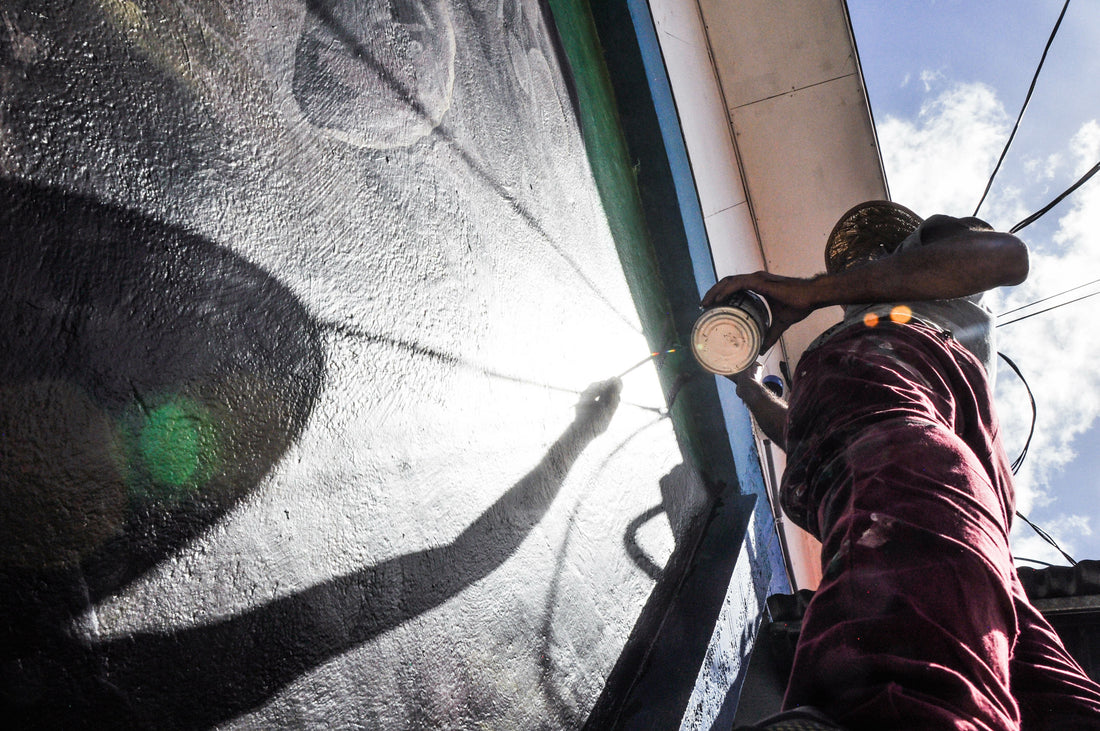WHAT
“Through art, scientific developments can be communicated to the public. Typically, our research is published in scientific journals that require subscriptions to access and a background knowledge to dissect the meaning behind carefully chosen words. Art is more accessible and can be shared in diverse online platforms, galleries, and museums.”– Colorado State University
HOW
How often do you read a white paper from a science journal. Yikes, right? I can barely watch a three second clip on Instagram anymore… So how do you think important information from the scientific community is effectively reaching the general public?
WHERE
Have you seen the murals around the city? How about murals in other cities. They are not just a fleeting trend. The city of Calgary is one of many populated hubs who have taken the time to study the impacts of art and creativity on economic growth and prosperity. There is a growing movement to use art to attract economic development and study the direct correlation to a city’s livability index and retention of a creative and innovative work force.
WHY
According to the CreativeCITY-Creative-Economy-Strategic-Guidebook.pdf (calgaryartsdevelopment.com), one of the Pillars of this initiative is to “Embed audacious creativity into our city’s DNA”. A key priority of achieving this is to “Leverage the existing momentum of Calgary’s growing cultural industries to embed creativity into our city’s brand and identity.”
If this is a priority for the city, how is your organization leveraging this movement and using art to engage your communities in your corporate goals? Did you know that using art to explain scientific and technical findings is something that has been proven to be effective when trying to reach the general public?
I have personally witnessed many “AH HAH” moments this past year when I explain that my paintings depict reclaimed sites. I LOVE it! It means I have fulfilled my mandate to be a disruptor. However, being an effective disruptor means you must effectively reach people to shift their perspective. Houston airport understands this.
For those who are confused as to why an art exhibit of reclaimed land can be an advocate for environmental reclamation, preservation and conservation efforts, please see some of the articles linked below. For those who have helped me share this mash-up between the arts and the sciences, I am truly grateful to you as champions of this concept. For those who have asked me to put the “A” in your STEM projects, you are ahead of the curve to recognize the impact of a STEAM (science, technology, engineering, arts and maths) approach as a communication strategy.
WHEN
Art has been used for centuries to communicate political movements, scientific discoveries and new ideas that aren’t wholly accepted by mainstream populations. I am breaking all the traditional rules of how and where to display my art – subscribe to receive early notice on my next exhibition.
There are so many scientific articles on how art can be used to reach people who typically would not show interest or have access to scientific information and reports. Remember, scientists and data experts usually subscribe to this type of information, and therefore know where to find it.
I am including a couple of links in case you receive questions on “Why Art?” as a communication tool for your technical industry. I have many more, but these are a sample of the research that is ongoing.
“There is growing interest amongst forward looking public officials, educators, and professionals in enhancing the education platform to better prepare students for both analytical and creative thinking. Traditional STEM (Science, Technology, Engineering, Mathematics) degrees focus on convergent skills whereas art degrees focus on divergent skills. Having the ability to execute both at scale can better position our nation for global competitiveness.” Michelle H. Land
“Grill-Spector finds there is a clear relationship between understanding art and being able to communicate science effectively. “Having good visuals really helps convey ideas and information in a clear way – it’s a really good way to get people to understand your idea,” she explained. This is one of the reasons she incorporates an art project into the curriculum for her undergraduate class, Introduction to Perception.” - Science meets art at Stanford
“A maturing body of work indicates that the arts can deeply engage people by focusing on the affective domain of learning (i.e., engagement, attitude, or emotion) rather than on the cognitive domain (i.e., understanding, comprehension, or application), which is often emphasized in science education [5]. Some contend that, by utilizing both domains, arts-based science communication catalyzes creativity and discovery by encouraging intuitive thinking [6].” - Science Communication Through Art: Objectives, Challenges, and Outcomes
“Convergence Initiative’s Founder and President Dr. Cristian Zaelzer is a neuroscientist at the Research Institute of the McGill University Health Centre (RI-MUHC) and a part-time Professor at Concordia University. The program is in its fifth year, and it revolves around the notion that bringing art and science together can advance an idea or expression and have a positive societal impact.”
“According to Dr. Zaelzer, science-art collaborations combine information and emotional triggers for high impact. “ - Knowledge translation: Why art can be a meaningful tool to communicate deep science
Science media agencies and science communicators can use some of these artworks to better illustrate specific phenomena or explain scientific ideas to non-expert audiences. Compared to conventional scientific illustrations, in fact, artistic drawings often highlight both the mesmerising beauty and impact of science, sparking greater interest and engagement among viewers.” - SciComm Corner - Can art communicate science? • scientia.global.

